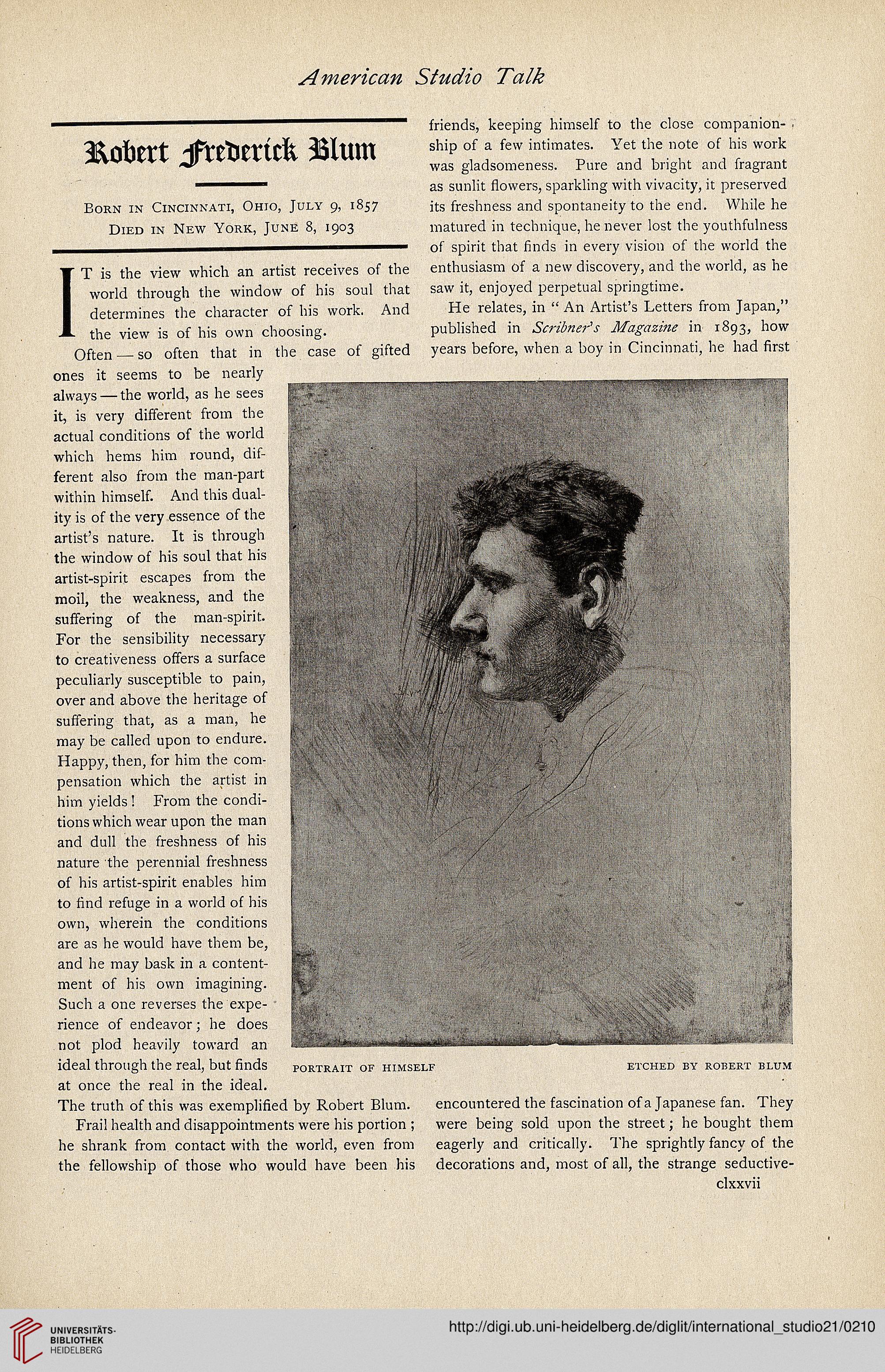Robat jfr^atdv Btum
BORN IN CINCINNATI, OHIO, JULY p, l8ß7
DlED IN NEW YORK, JUNE 8, 1903
T T is the view which an artist receives of the
# world through the window of his soul that
!- determines the character of his work. And
the view is of his own choosing.
Often — so often that in the case of gifted
ones it seems to be nearly
always — the world, as he sees
it, is very different from the
actual conditions of the world
which hems him round, dif-
ferent also from the man-part
within himself. And this dual-
ity is of the very essence of the
artist's nature. It is through
the window of his soul that his
artist-spirit escapes front the
moii, the weakness, and the
suffering of the man-spirit.
For the sensibiiity necessary
to creativeness offers a surface
peculiariy susceptible to pain,
over and above the heritage of
suffering that, as a man, he
may be called upon to endure.
Happy, then, for him the com-
pensation which the artist in
him yields ! From the condi-
tions which wear upon the man
and dull the freshness of his
nature the perennial freshness
of his artist-spirit enables him
to find refuge in a world of his
own, wberein the conditions
are as he would have them be,
and he may bask in a content-
ment of his own imagining.
Such a one reverses the expe-
rience of endeavor; he does
not plod heavily toward an
ideal through the real, but finds
at once the real in the ideal.
The truth of this was exemplified by Robert Biurn.
Frai! health and disappointments were his portion ;
he shrank from contact with the world, even from
the fellowship of those who would have been his
encountered the fascination of a Japanese fan. They
were being sold upon the Street; he bought them
eagerly and critically. The sprightly fancv of the
decorations and, most of all, the stränge seductive-
clxxvii
friends, keeping himself to the close companion-
ship of a few intimates. Yet the note of his work
was gladsomeness. Pure and bright and fragrant
as sunlit flowers, sparkling with vivacity, it preserved
its freshness and spontaneity to the end. While he
matured in technique, he never lost the youthfulness
of spirit that finds in every vision of the world the
enthusiasm of a new discovery, and the world, as he
saw it, enjoyed perpetual springtime.
He relates, in " An Artist's Letters from Japan,"
published in .y<r7*/7w7*'.y in 18^3, how
years before, when a boy in Cincinnati, he had first
PORTRAIT OF HIMSELF
ETCHED BY ROBERT BLUM




